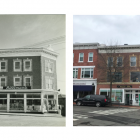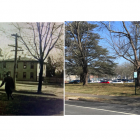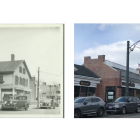Homepage Featured
New Canaan Now & Then: Silliman’s
|
The Silliman and Weed, a grocery store, was formed in 1867 by Joseph Fitch Silliman and Chauncey Weed. This business was located on the south corner of Main Street and East Avenue, most likely in 102 Main Street now occupied by Personal Touch and Dashi Custom Tailors. After a few years, Silliman bought out Weed and moved the store to what is now 114 Main Street. (At this point the brick Raymond building, which was covered in a previous article, had not been built.) Renamed Silliman & Co., the store occupied a two story wooden structure, and sold groceries along with hardware, furniture, and crockery. It also sold small farm equipment to the local farmers.





